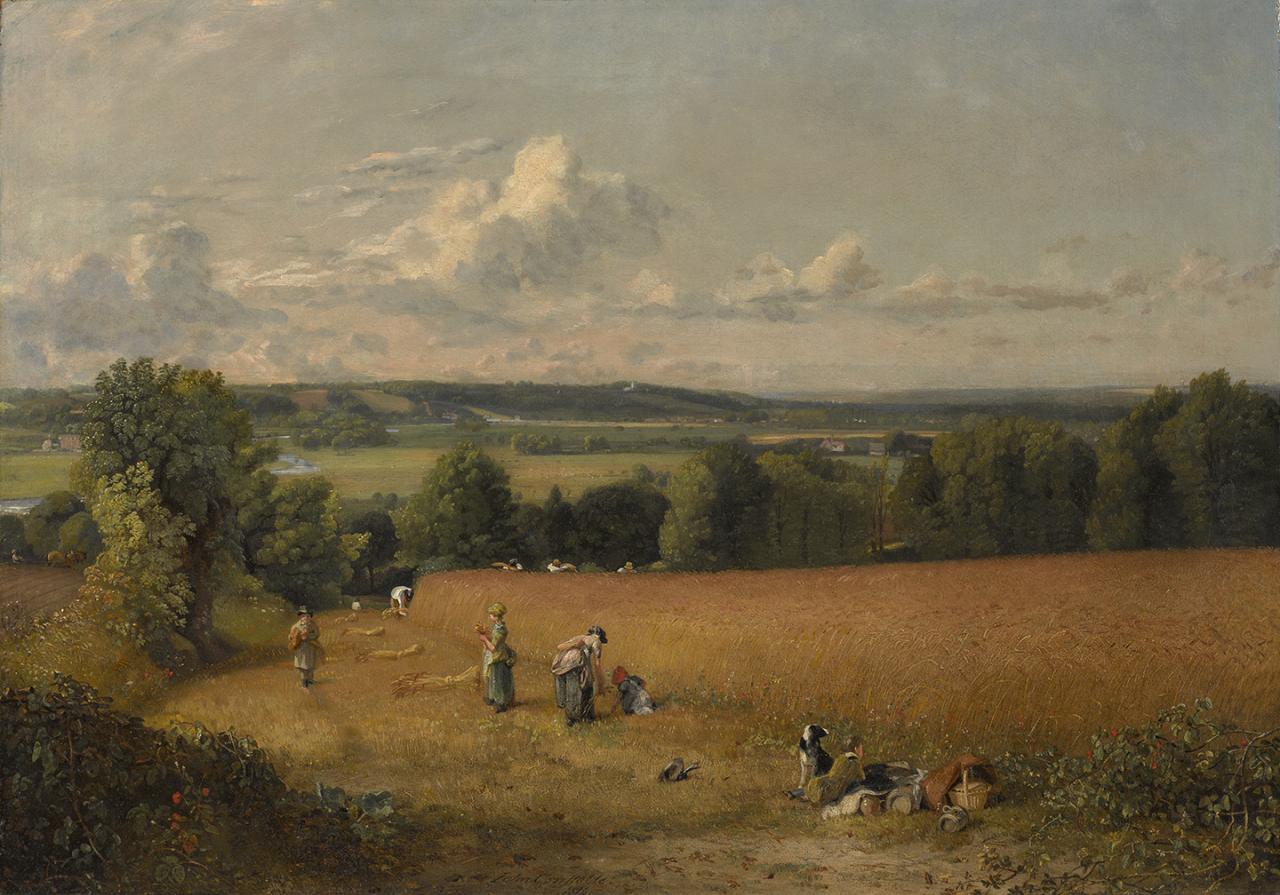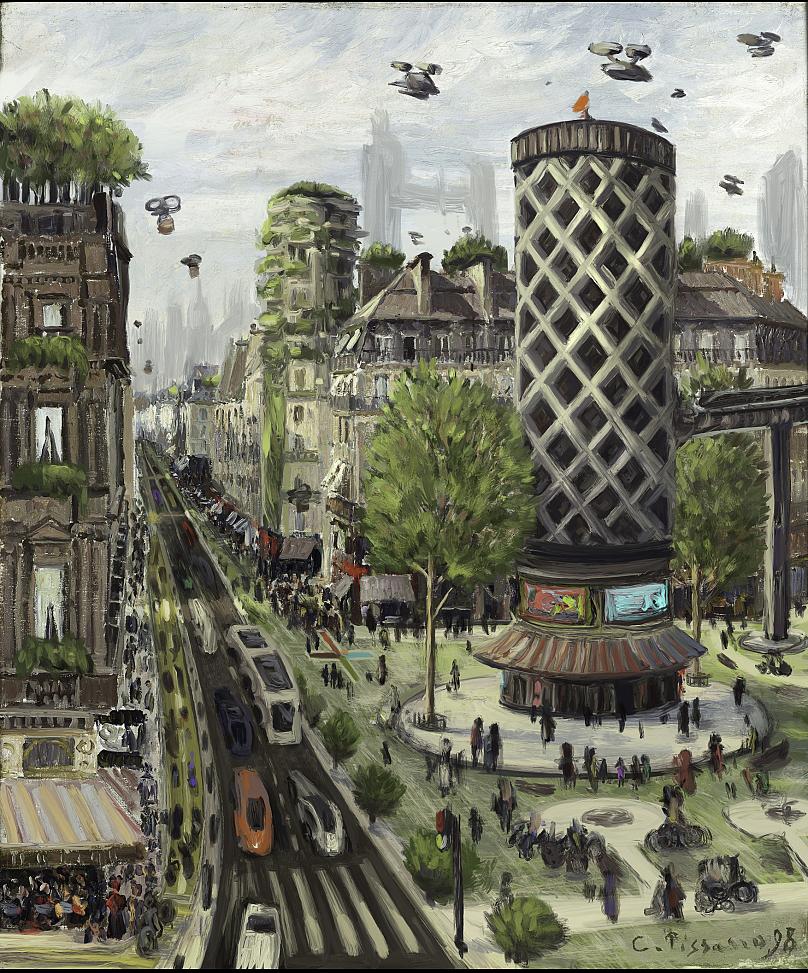Digital artist has reworked masterpieces to inspire a conversation about the engineering advances
Sympathetic reimaginings show how innovative agriculture, aviation, transport and buildings could help to transform everyday life and landscapes
repost by an article of the Royal Academy of Engineering
Digital artist Ashly Lovett, commissioned by the Royal Academy of Engineering, has reworked masterpieces by Monet, Van Gogh, Constable and Pissarro to inspire a conversation about the engineering advances could help to achieve net zero carbon emissions by 2050
Van Gogh’s Factories at Clichy, Constable’s The Wheat Field, Pissarro’s La Rue Saint-Honoré and Monet’s The Seashore at Sainte-Adresse have been digitally remastered by a contemporary artist, Ashly Lovett, to show how engineering innovations could help to transform everyday life and landscapes in the future.
Innovations such as agricultural robots, smart thermochromic windows, vertical farms and flying taxis have been woven into the reimagined impressionist masterpieces to depict what a more sustainable world may look like in the future.
The artworks had been commissioned by the Royal Academy of Engineeringahead of This is Engineering Day on last Wednesday 3 November, which aims to encourage more young people to choose engineering careers in response to a significant skills and diversity shortfall in the profession.
Reimaginings how innovative technologies could help to transform everyday life and landscapes
Painters such as Constable, Monet, Pissarro, and Van Gogh first made their marks in the art world during the industrial revolution. While this era drove economic benefits and improvements in living standards for many, we now know that it triggered the start of rising carbon emissions leading to global warming.
Ahead of COP26, masterpieces by these iconic artists have been reimagined to inspire conversations about the kinds of engineering advances that could help to achieve net zero carbon emissions by 2050.
Dr Rhys Morgan, Director of Engineering and Education at the Royal Academy of Engineering says: “The UK’s goal of reaching net zero carbon emissions by 2050 is a massive undertaking. Decarbonisation on this timescale and magnitude will bring widespread and rapid change to every aspect of daily life and meeting our goal of a net zero future will not be achieved without engineering expertise. From the ways we heat, cool and light our homes, to how we produce our food, how we build our houses and how we travel around, our future daily lives will be shaped by today’s engineers and engineering.
“These famous masterpieces originally captured a snapshot of daily life at a time when the consequences of carbon emissions were not known. By reimagining them for 2050 we hope to start a conversation about how engineers can help shape our net zero future and inspire the next generation to join the profession. To realise the emission-saving technologies imagined in these artworks, the UK needs more engineers – for example, National Grid estimates that the UK energy sector alone will need to fill 400,000 roles between now and 2050 to reach net zero.”
Watch them yourself via Google Arts&Culture
The Engineer the Future collection can be viewed during COP26 at Strathclyde University in Glasgow and online via Google Arts & Culture. The aim of the exhibition is to start a conversation about what we want a net zero future to look like, and the role of future engineers in that, with viewers invited to contribute their own ideas via social media
Van Gogh’s smoggy skylines
The first piece of the collection features the smoggy skyline of Clichy painted by Vincent Van Gogh. The digital rendering replaces the stone factories with glass-roofed buildings and towers higher than the billowing smoke seen in the original work.
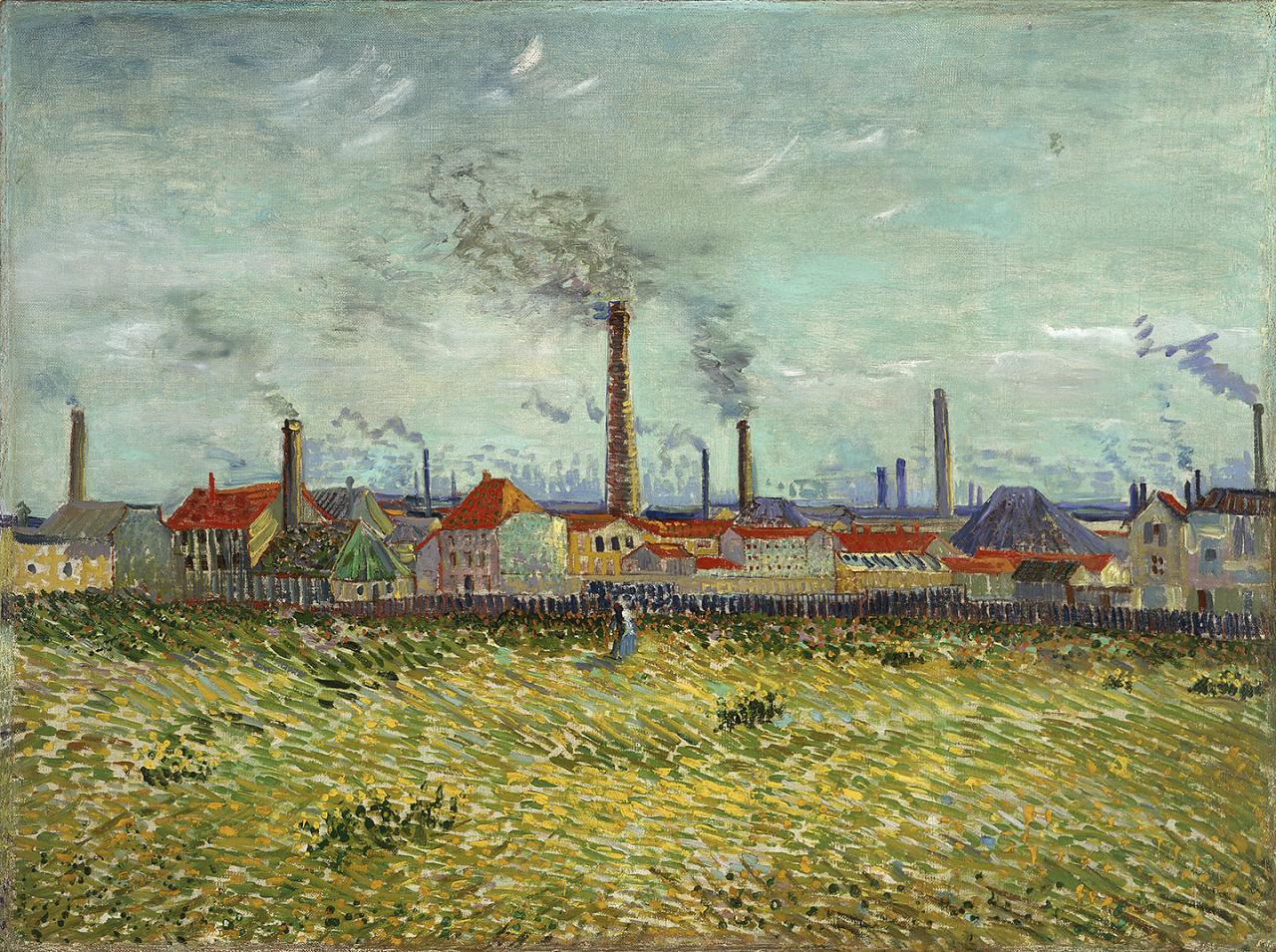
Were Van Gogh to paint Factories at Clichy in 2050, his masterpiece might feature autonomous ‘agbots’ – agricultural robots – tending the crops using precision farming; a development that could help to slash agricultural carbon emissions.

Constable’s The Wheat Field
“If Constable were to walk in the British countryside in 2050, he’d see smaller fields with strips of different coloured crops, and less productive fields rewilded with trees, wildflowers and shrubs to boost biodiversity and pollination,” explains Kit Franklin, a senior lecturer in agriculture engineering at Harper Adams University.
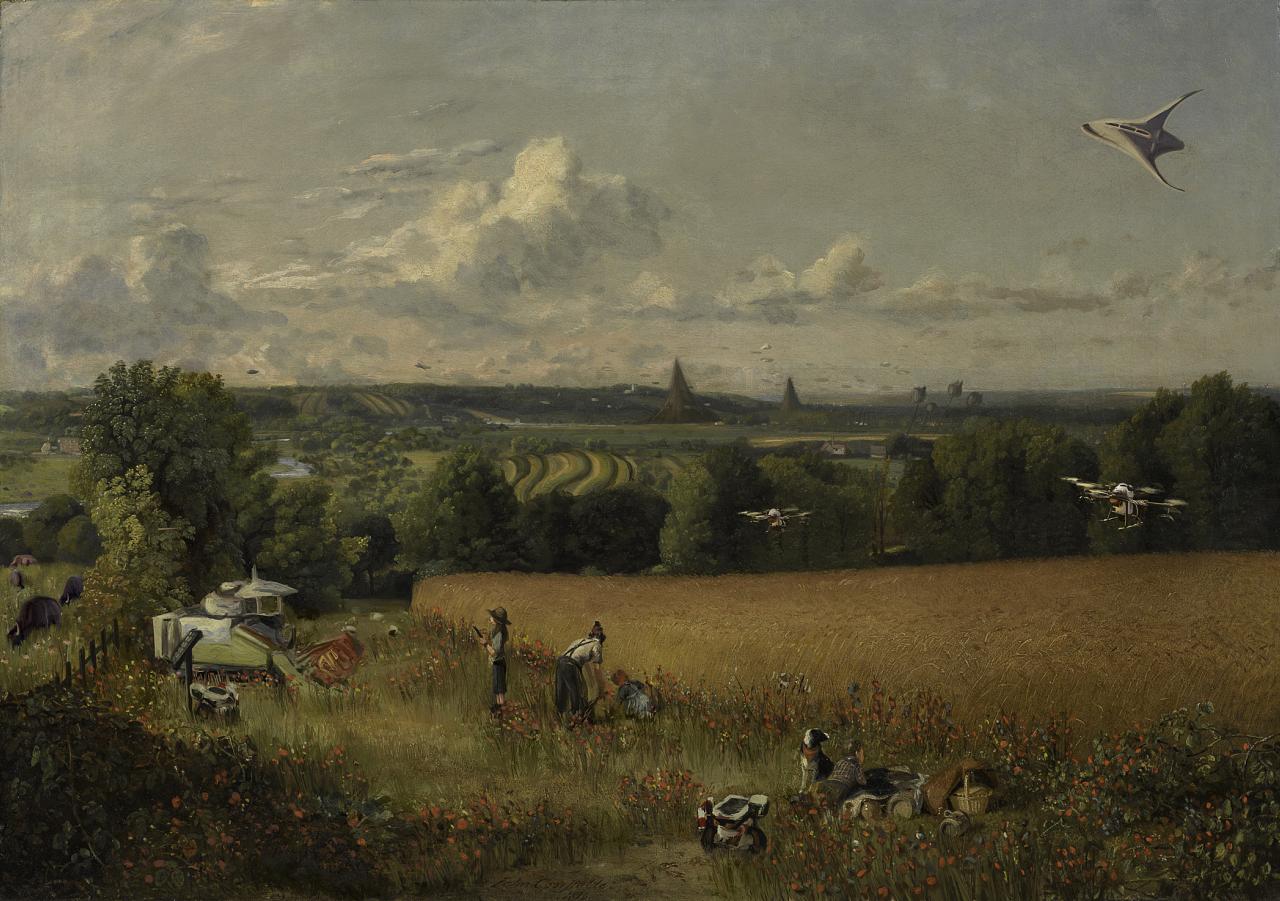
Reimagined for 2050, The Wheat Field includes solar powered pruning robots, autonomous grass cutting machines and crop-monitoring drones. Meanwhile, environmentally friendly hydrogen planes can be seen in the sky, with futuristic shapes that maximise fuel-efficiency and range of travel.
“The artistic reinterpretation of Constable has removed the hard physical labour and repetitive tasks of agricultural farmhands as autonomous robots take on the work humans would have traditionally done. Agbots make farming more precise to conserve vital resources like water and energy and we’ll see smaller machines in future to help preserve soil quality and health”, says Franklin.
Monet’s high-tech fishing village
The Seashore at Sainte-Adresse by Claude Monet captures the shoreline in the affluent city of Le Havre, Normandy. At the time of painting, this area was undergoing a dramatic transformation from a traditional fishing village to a developed city that is seen in the depths of the horizon with factories billowing smoke into the city.
Monet’s series of paintings from Sainte-Adresse reveal the contrasts of a bourgeoisie industrial revolution and the simpler tools of workmen across the nautical backdrop.

Professor Susan Gourvenec, RAEng Chair in Emerging Technologies for Intelligent & Resilient Ocean Engineering at the University of Southampton, whose ideas have been incorporated into a reimagined Monet, commented: “If Monet was to paint The Seashore at Sainte-Adresse in 2050, his famous seascape might feature offshore energy farms generating renewable energy through wind turbines or tidal power, which could be used to power homes or produce green hydrogen, and to refuel ocean-going cargo vessels offshore. Closer to the shore, seagrass plantations might be visible, which would not only capture carbon but also provide coastal protection and improve the coastal ecosystem and habitat for wildlife.”
The artist has also imagined a residential building on the coast that uses thermochromic windows to help to cool the house and generate solar power, reducing its carbon footprint and maximising efficiency.
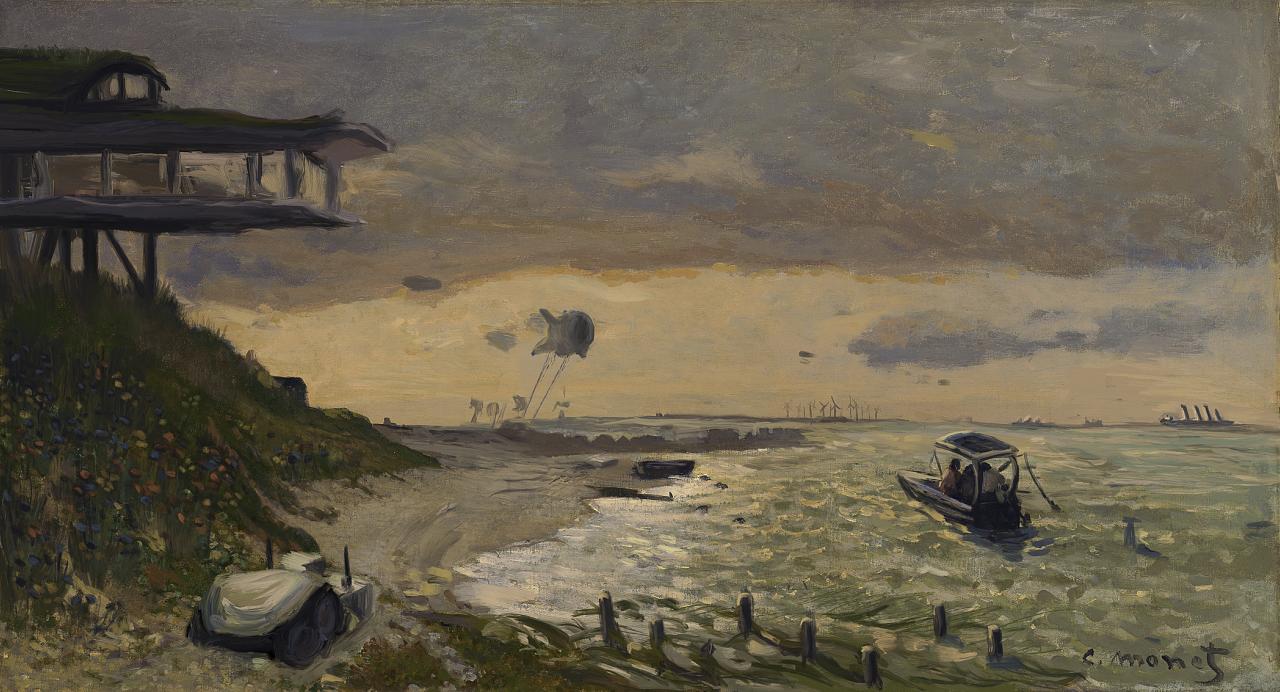
Pissarro’s biophilic Paris
Camille Pissarro’s Rue Saint-Honoré captures the famous Parisian road in the late 19th century under a shower of afternoon rain. The street is busy, with carriages lining the buildings and bundles of pedestrians dotted in between.
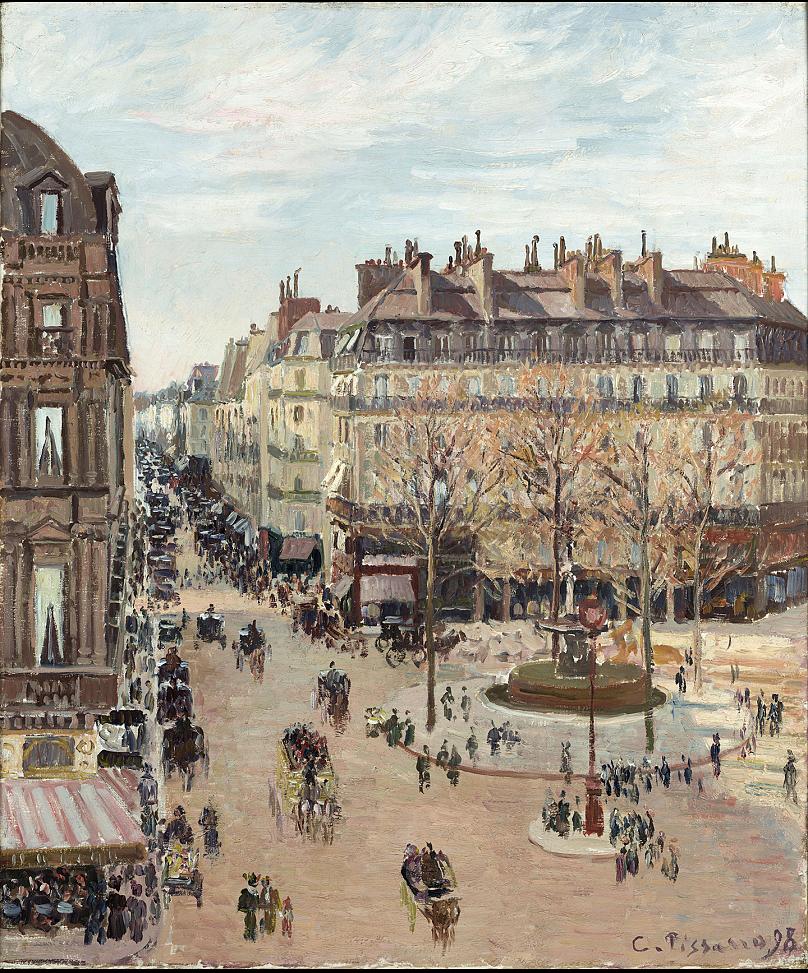
Pissarro’s La Rue Saint-Honoré has been reworked to reflect a vision of the future in which a central hub links several public transport systems including an electrically powered monorail, vertical taxi station and underground stations. Professor Chris Wise RDI FREng, Founder Partner of Expedition, says: “If Pissarro were to travel to Paris in 2050, he might find buildings that have been designed to take full advantage of their environment.
No side of a building would look the same: the south facing side is shaded and both east and west facades have screens to capture the morning and evening sun. The artist might also find chameleon buildings with a ‘skin’ that is responsive to sunlight and shade for temperature regulation.
Pissarro, who suffered from an eye-infection and eventually went blind, would find getting round the city easier with colour coded areas and rumble strips, as well as a monorail system that dispenses with the need for a car. He’d also find less hard landscaping. As we see increased rainfall and flooding in the future, cities will have replaced concrete pavements with more permeable materials and greenery.”
The whole series can be watched on the Museum of Engineering on Google Arts & Culture
source: Royal Academy of Engineering I Euronews
cover image: Ashly Lovett for Royal Academy of Engineering I credits: Royal Academy of Engineering
Maker Faire Rome – The European Edition has been committed since eight editions to make innovation accessible and usable to all, with the aim of not leaving anyone behind. Its blog is always updated and full of opportunities and inspiration for makers, makers, startups, SMEs and all the curious ones who wish to enrich their knowledge and expand their business, in Italy and abroad.
Follow us, subscribe to our newsletter: we promise to let just the right content for you to reach your inbox



